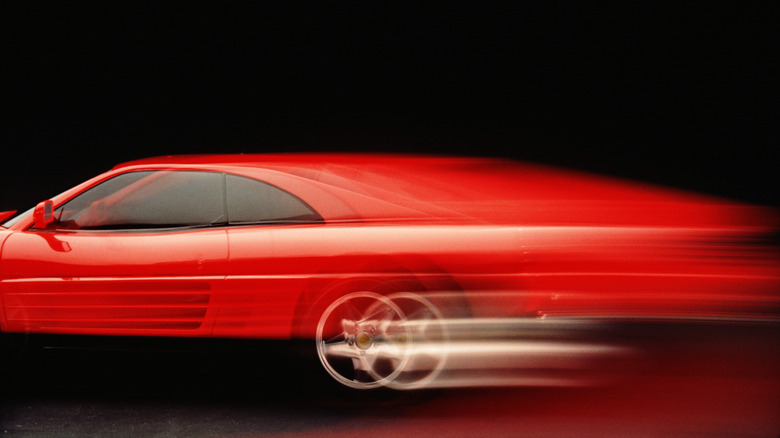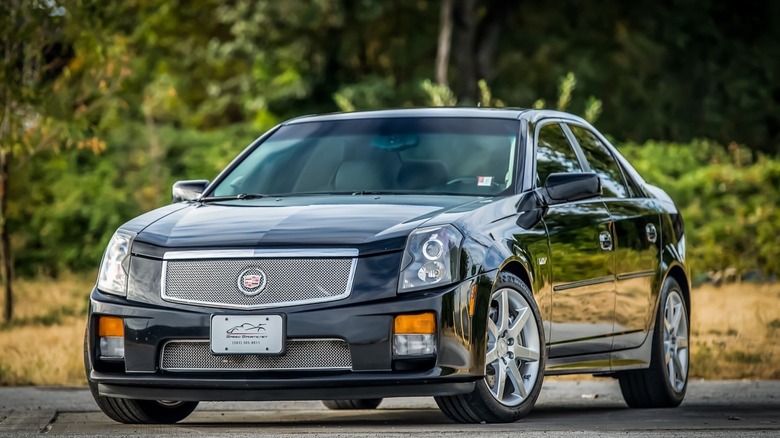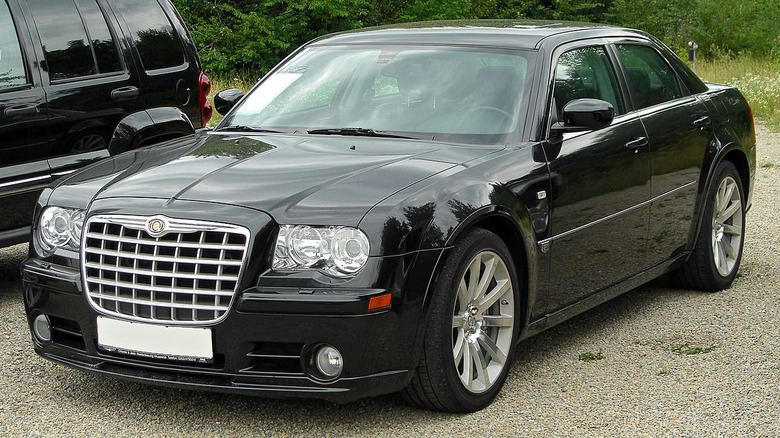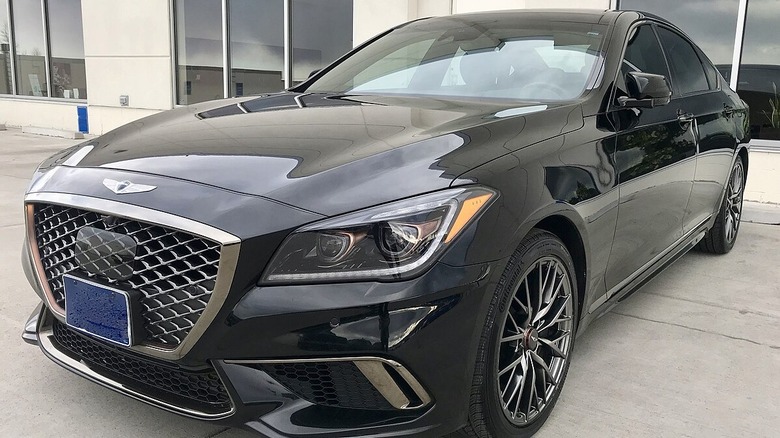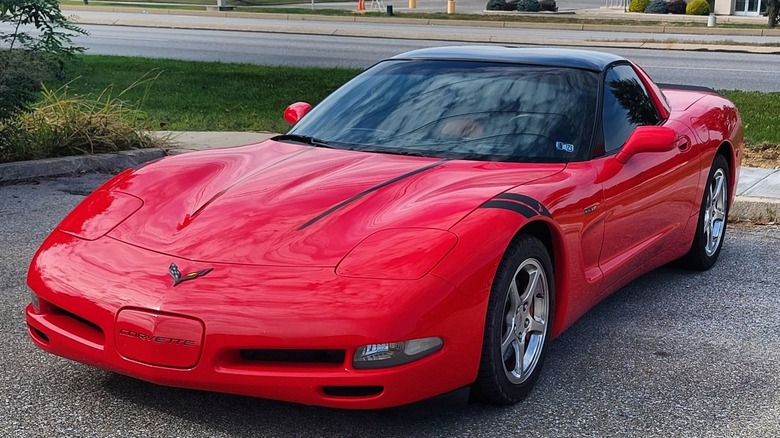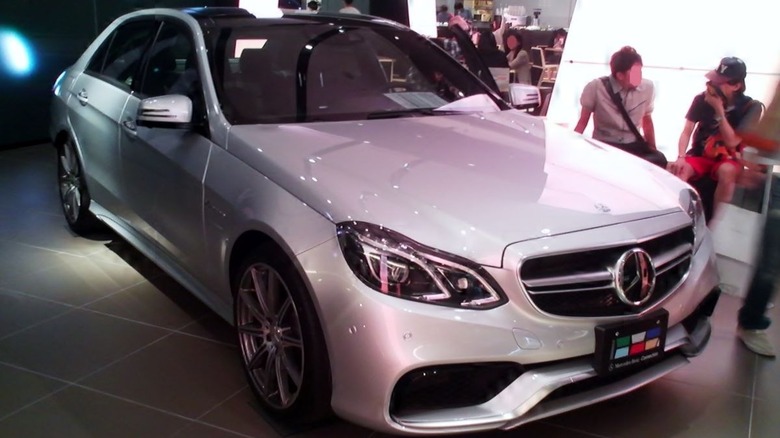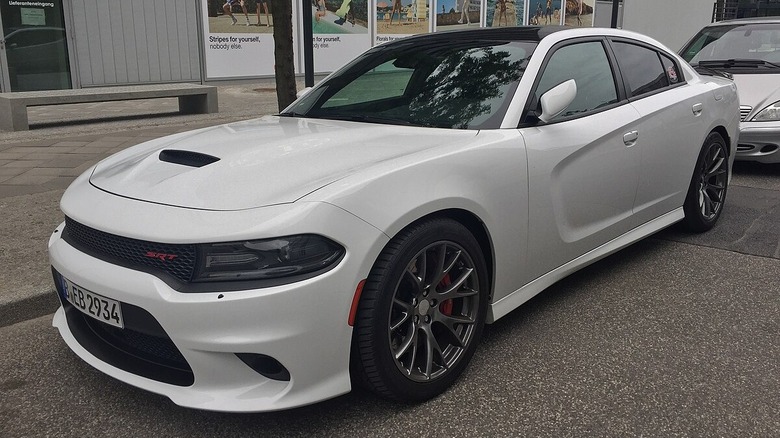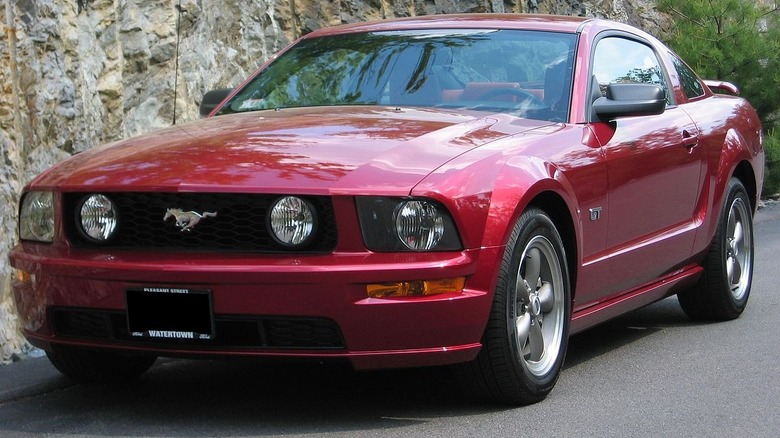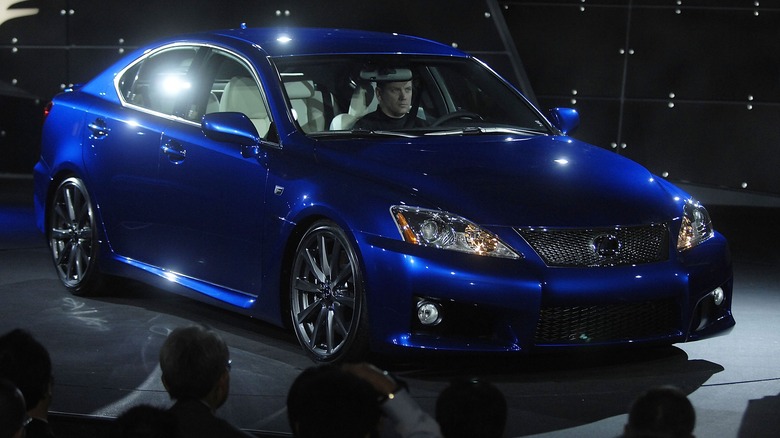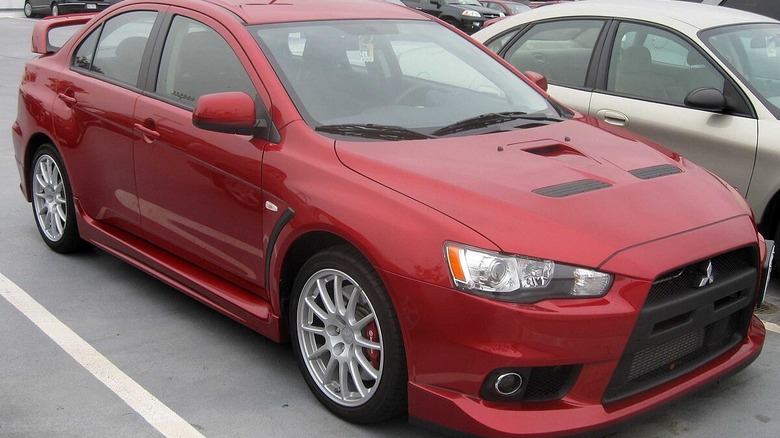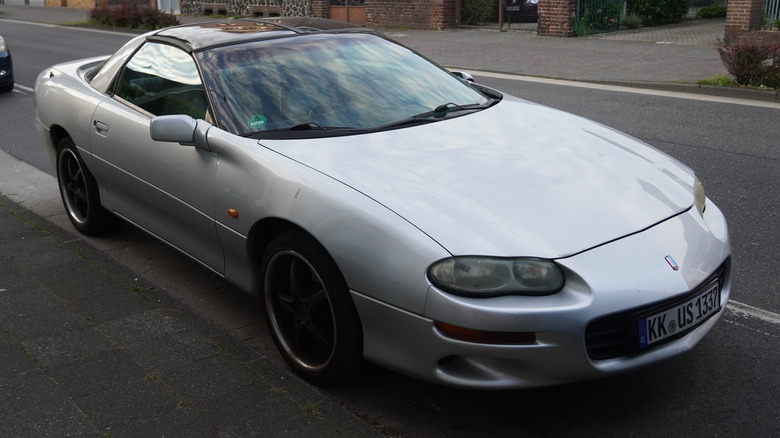10 Of The Fastest Cars You Can Buy Under $30,000
A fast car, a dream for auto lovers everywhere, is often associated with a hefty price tag. However, with the right knowledge and a bit of savvy, you can still get your hands on a powerful engine and a reliable car for under $30,000. Despite the recent surge in auto prices, the thrill of speed is within reach for those who know where to look.
Speed is a subjective experience. What's fast for a professional like Max Verstappen might not be the same for you, and there are countless ways to enjoy speed. Whether you're a track enthusiast, a city driver, or a fan of scenic routes, there's a speed experience for everyone.
Our approach to defining speed is comprehensive. We consider various factors, from horsepower to acceleration to track times, to provide a well-rounded view of what "fast" means. We've scoured the market and selected 11 of the fastest cars you can buy for under $30,000.
Cadillac CTS-V
America's premier luxury auto-builder pivoted hard at the millennium. The rolling land yachts faded into history as Cadillac focused on high-performance models that would compete with Mercedes, BMW, and Lexus.
Cadillac's new mission manifested in the debut of the CTS-V in 2004. Immediately making a splash in the auto world, the CTS-V sailed on to have a successful career as one of Cadillac's most potent models before it graduated to the CT5 Blackwing in 2019. The upshot is a used market brimming with powerful and stylish sedans.
Cadillac reached into GM's bag of tricks and pulled out a 5.7-liter LS6 V8 sourced from the Corvette. The 2004 and 2005 CTS-V models got the LS6, while a mid-generation upgrade gifted the 2006 and 2007 models a 6.0-liter LS2 V8. Both engines made 400 horsepower and 395 lb-ft of torque, but the 6.0 gets it lower in the power band. Reports of rear-end issues are not unheard of, but overall, the CTS-V proved more than a match for contemporaries like BMW's M5 and Audi's S4. Aside from rocketing from zero to 60 mph in less than five seconds, critics praised its handling and ride quality.
The first-gen CTS-V demands an average used market price of $19,690, and Classic.com reports a top sale price of $32,000, meaning there should be plenty of options under that $30,000 mark.
Chrysler 300C SRT-8
Around the same time Cadillac turned to performance, Dodge's Street and Racing Technology (SRT) team coalesced into a division with a firm mandate to pep up cars with a Chrysler or Dodge badge. Most famous for its work with Vipers, Chargers, and Challengers, SRT nonetheless cut its teeth on something that has flown a tad under the radar: the Chrysler 300C SRT-8.
The 300 series has a pedigree stretching back to 1955, and Chrysler paid homage to that lineage with a stately sedan pushing serious power. Even before the Hellcat and Hellephant engines stole headlines, Chrysler still had the legendary Hemi V8, which it happily employed in the 2005 to 2010 300C SRT-8.
The first-generation 300C received a 6.1-liter Hemi, sending 425 horsepower and 420 lb-ft of torque to the rear wheels. It is a little heavy, tipping the scales at 4,163 pounds, but that's what you get in a full-sized sedan. The SRT-8 pulled low 13-second quarter miles and a zero to 60 mph time of 4.7 seconds. It might not handle like a Corvette, but there's no such thing as perfection.
It's hard to find that kind of power in a full-sized sedan, especially under $30,000, but an average used market value of $21,146 puts it squarely in the tremendous value for power category.
Hyundai Genesis G80 Sport
America isn't the only nation building speedy rear-wheel drive sedans. Korean automaker Hyundai has been climbing the quality ladder for years, and its Genesis G80 provides a ton of bang for the buck.
Hyundai introduced its luxury Genesis line in 2017 as a mid-sized sedan meant to compete with the BMW 5-series, Cadillac CTS-V, and Audi A6. With stiff competition like that, Hyundai must put its best foot forward. The 2017 to 2019 G80 got a trio of engine options ranging in displacement from a 3.3-liter V6 to a 5.0-liter V8, but the Sport model offers the best mix of performance and price.
The 3.3-liter twin-turbo V6 under the hood of the Sport sends a respectable 365 horsepower to the rear wheels via an eight-speed automatic transmission. Though Hyundai offers a 5.0-liter V8 version, Car and Driver's road test reports that the 2018 Sport outdoes the previous V8 version in nearly every acceleration category. Zero to 60 clocked in at 4.9 seconds, the quarter-mile passed in 13.5 seconds, and its turbos performed with minimum lag.
Competing with established luxury and performance brands often means undercutting on price while offering near-peer performance, and that's precisely what the G80 Sport does, to the benefit of consumers. Kelley Blue Book pins the fair market range of the relatively new sports sedan at between $21,000 and $25,000.
Chevrolet Corvette
Enough about the luxury sedan market for a moment. Let's take a look at a sports car legend. Chevrolet's Corvette has been giving drivers whiplash since its inaugural year in 1953. While known for aggravating supercar builders, the two-seater can be a great choice if you want a dedicated sports car.
The enormous used market is the best thing about Vette's seven-decade run. The release of the mid-engined C8 in 2020 stole the spotlight, but previous generations still have a lot to offer. The current sub $30,000 sweet spot is the fifth-generation C5 Corvette built between 1997 and 2004. While special or premium specimens can demand six figures, the average price for one of these aging beauties is $26,616.
For your money, you get a bulletproof 5.7-liter V8 filtered through an automatic or six-speed manual transmission. The base LS1 guarantees 350 horsepower and 350 lb-ft of torque, while the 2001 to 2004 Z06 made 385 horsepower and 385 lb-ft of torque in an upgraded configuration. With a curb weight of around 3,300 pounds, the 1997 C5 zips to 60 mph in 4.7 seconds and made it around Nurburgring from a standing start in 8:40.
The Z06 might be tough to find under $30,000, but part of what makes Corvette great is the enormous performance aftermarket. With some garage time, your new 'Vette can take on the role of anything from a drag-strip demon to a weekend SCCA hero to a grand tourer.
Mercedes-Benz W212 E63 AMG
The word "Mercedes" conjures up thoughts of six-figure price tags and outrageous German performance. In the case of the 2010 to 2016 Mercedes Benz E-63, that's only half true. The fourth-generation E-class has depreciated significantly from the original near $100,000 price tag. Classic.com reports an average used market value of $28,406, and Kelly Blue Book pegs the 2016 S-model fair market price between $27,000 and $31,000.
The 2010 E63 debuted at the 2009 New York Motor Show, promising 525 horsepower and 518 lb-ft of torque from a naturally aspirated 6.2-liter V8. In 2011, Mercedes reduced displacement to 5.5 liters but added twin turbos—the new configuration made about the same amount of power. Mercedes, always seeking to outdo itself, dropped a 2013 facelift on the E63, including a 577 horsepower all-wheel drive S-model.
Whichever configuration you go for, the E63 AMG spells fast. Zero-to-60 times range between 4.2 and 4.5 seconds against a weight over 4,000 pounds. With a top speed of 155 mph, the luxury sedan is classy, competent, comfortable, and everything else you'd expect from Mercedes, bar for one thing: it's affordable.
Dodge Charger R/T and SRT-8
Street and Racing Technology is back on the list with its reinvented Charger. Dodge's supercharged Hellcat engines dominate the modern muscle conversation, but unfortunately for Mopar maniacs, the Hellcat Chargers and Challengers seem to be the rare breed that doesn't depreciate much. However, for those who don't need 700 horsepower (and, honestly, who does?), there is another way.
Dodge and SRT brought the vaunted Charger nameplate back from the dead in 2006. The first Charger since the turbo four-cylinder of the '80s, it was clear that Dodge meant to live up to its '60s reputation as a muscle-bound beast. Dodge tested the waters by building the sixth-generation Charger from 2006 to 2010.
Two of the era's high-performance options enjoy relatively low prices. The Charger R/T, built between 2006 and 2008, has an average used price of $18,000, while the SRT-8 edition is just under $26,000.
The 2006 R/T received a 5.7-liter Hemi V8 capable of 340 hp and 390 lb-ft of torque, while by 2010, the upper echelon SRT-8 could produce as much as 425 horsepower and 420 lb-ft of torque via a 6.1-liter engine.
Don't expect these prices to last. Hemmings estimates the high-performance mig-aught Chargers are nearing the bottom of the deprivation curve. Any longer, and they might venture into certified classic status, which usually includes a significant price hike. Buried under all the Hellcat business, these vehicles might be the best bang for your buck.
Ford Mustang S-197 I
It's hard not to love the Mustang. The only car of the muscle and pony era to enjoy continuous production since its inception, there are plenty of opportunities to score a performer for under $30,000.
The fifth generation is the latest and greatest to sneak in under the $30,000 price. Built between 2005 and 2014, a mid-gen facelift divides the Mustang into two categories: the 2005 to 2009 S-197 I and the 2010 to 2014 S-197 II. The average S-197 II demands $31,000, so focus on the first half of the generation for the best value.
The lower end of the spectrum includes the Mustang GT at an average used price of $22,635. With a 4.6-liter V8 making 300 horsepower, it might be one of the most sane vehicles on this list — and that's a good thing. A 5.2-second run up to 60 mph is more than enough for most, but if you're the exception, there's no shortage of special editions.
Ford fans will be familiar with legendary modder Jack Roush. His cosmetic and performance packages have been optimizing Mustangs for decades. Even the upper-tier 430-horsepower Roush Stage 3 S-197 I Mustang averages under $30,000 at $28,656.
Lexus IS-F
Toyota's offshoot brand combines the reliability of the respected automaker with luxury and performance. The first IS sedan was released in 2001. The "IS" stands for intelligent sport, which signaled Lexus' vision for a sedan that performs. When the second generation appeared in 2007, the well-received performance sedan had earned Lexus' F performance badge.
Between 2007 and 2014, the second-gen Lexus IS-F quietly and competently offered world-class performance meant to compete with the BMW M3 and Mercedes C63. The second generation 2008 model year IS-F debuted at the North American International Auto Show. It sported a 5.0-liter V8 with 417 horsepower that zipped it to 60 mph in 4.6 seconds. By the end of the generation in 2014, Car and Driver praised its handling around a track and low-end torque but gave it strikes for a suboptimal interior (for a luxury brand) and high MSRP at $63,600.
The word timeless gets thrown around a lot, but the IS-F remains one of the best-looking Lexus models ever designed. A decade from its final form, the second-gen is still a pleasure to watch.
These gems can be had for under $30,000. Classic.com puts the average used cost for the generation at $29,520, and Kelley Blue Book reports the lower end of even the final year of the generation at a hair under the mark at $29,692.
Mitsubishi Lancer Evolution X
Mitsubishi dominated the rally world for years through 10 generations of its all-wheel-drive Lancer. Times have changed, but the civilian version of the Lancer still packs some punch. The 10th and final generation Lancer Evolution X had a long production run between 2007 and 2016, leaving plenty of modifiable sport sedans for under $30,000. These modifiable aspects include the engine, suspension, and aerodynamics, making it a perfect canvas for car enthusiasts to personalize their ride.
Small displacement was the name of the game for the Lancer. Its 2.0-liter inter-cooled turbocharged four-cylinder made 291 horsepower and 300 lb-ft of torque out of the gate. The X represented a significant change in Mitsubishi's approach to its rally car. An aluminum block replaced the previous iron block for a 26-pound weight savings. A new dual-clutch transmission sent the GSR model to 60 mph in 4.3 seconds.
The Evolution X is a thrilling choice for those who want to add some excitement to their daily commute or indulge in weekend racing. Its smaller displacement engine and undeniable racing pedigree make it a canvas for customization without making an unmanageable experience for daily driving.
The used market for the aging rally sedan reports an average cost of $29,247, which will naturally fluctuate based on mileage, condition, and upgrades.
Chevrolet Camaro
Chevrolet has a long lineage of building muscular cars, but its most enduring nameplate from the muscle era is undoubtedly the Camaro. Debuting in 1967 to compete with the Ford Mustang, Chevy cut it in 2002, only to bring it back in 2009 for two more generations. The final sixth generation ended production in January 2024, but we reached back to the fourth generation to find affordable power.
The fourth-generation Camaro sneaks in under the radar as a powerful, adaptable sports car approaching future classic status. Debuting in 1993, Chevy offered the classic Z/28 and SS models with a 5.7-liter V8 making between 275 horsepower. When the "catfish" Camaros arrived in 1998 with a facelift making the front fascia look like the face of a catfish, those power numbers were in the 300-plus range. The 2002 SS got a 5.7-liter LS1 V8, making 325 horsepower and 340 lb-ft of torque.
One of the key strengths of the fourth-generation Camaro is its strong aftermarket support. With an enormous selection of performance parts available, maintaining and upgrading the Camaro is easy enough to make a great project.
And with an average price of $20,760, you can use the savings to buy that sweet exhaust system you want, then blast some Everclear on the stereo and pretend it's still the '90s as you go for ice cream and hurl yourself down the drag strip on the weekends.
